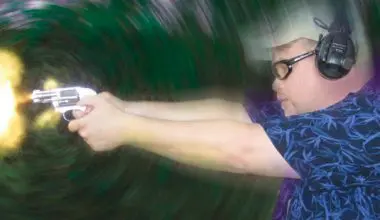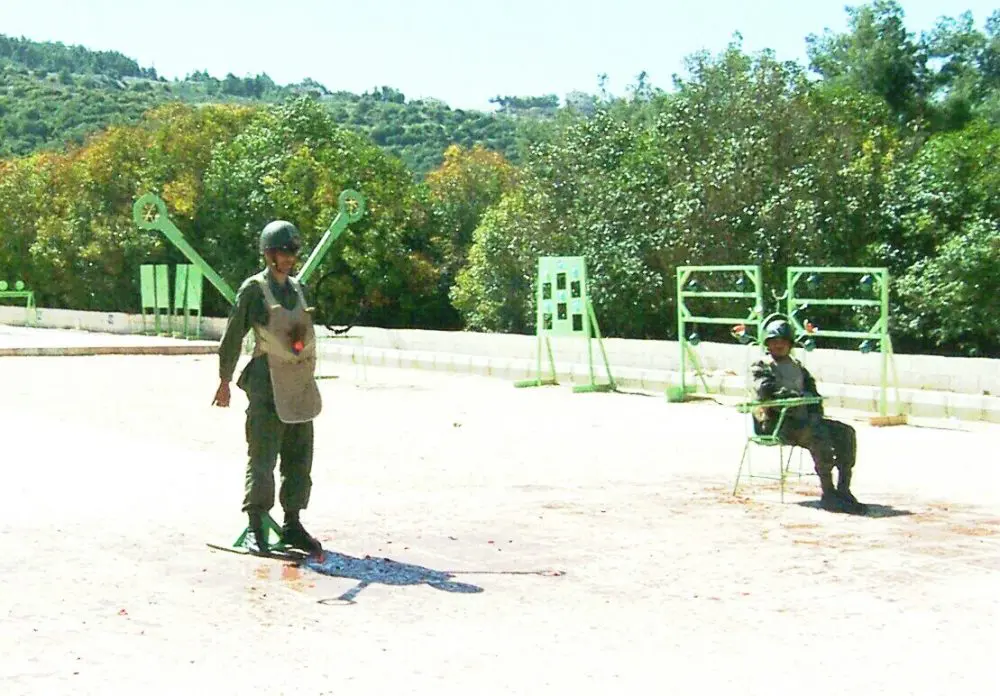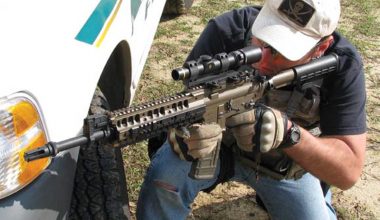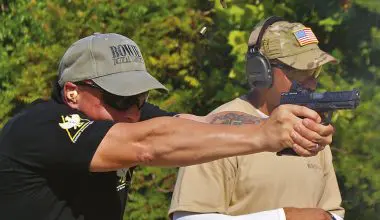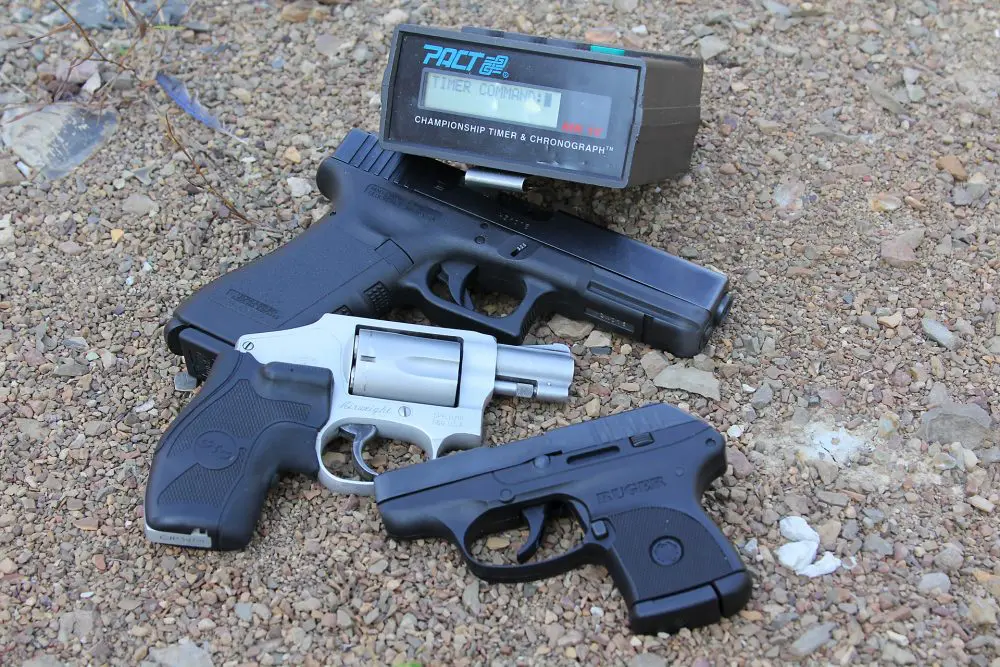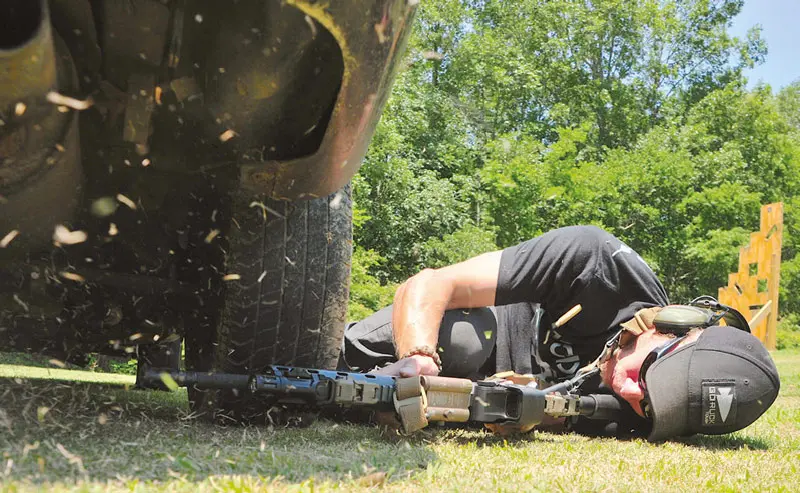
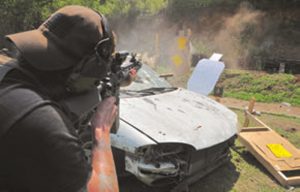
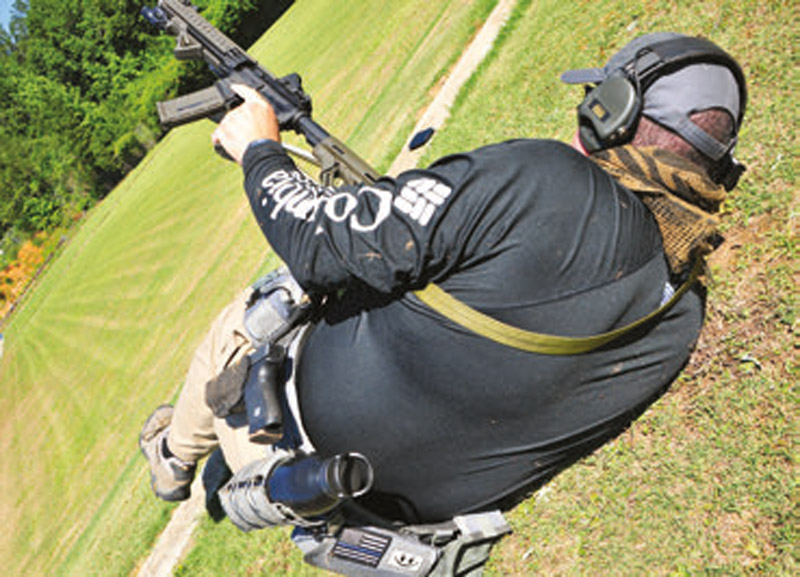
I recently attended my fourth training course with Talon Defense (TD) in Gadsden, Alabama. I know I speak for every student who attends a TD course by saying that when you finish, you’re generally not the same shooter you were when you began. The barrier work alone at a TD class will force you to take a hard look at your abilities with a firearm.
I made my initial foray to Talon Defense for their Dark Gunfighter course (THE DARK NIGHT RISES, May 2013 S.W.A.T.). Since then I have returned for a total of four classes.
Each class relies heavily on barrier work coupled with lots of shooting on the move. The first two classes I attended with TD were done in darkness. Having survived Dark Gunfighter, I jumped at the opportunity to come out to the daylight version of that course. How hard could it be? Prepare to be humbled.
Table of Contents
CHASE GOOD, CURT BAD
On Training Day 1 (TD1), we were greeted by Talon Defense owner and head instructor Chase Jenkins at the Gadsden, Alabama Police Department range. While gearing up, you invariably meet someone you’ve trained with in the past, because Talon Defense draws repeat business from its students. One reason for that is Chase employs great instructors. For this course, he was accompanied by Brandon Teague, Greg Brundage, and Curt Carpenter.
Chase and Curt both run firearms training schools and have a friendly rivalry. If you’re at Chase’s northern Alabama- based Talon Defense, you often hear, “Chase good, Curt bad.” If you’re at Curt’s southern Alabama-based Lighthorse Tactical, it’s “Curt good, Chase bad.” The reality is that these two men draw from one another’s experiences from many years in law enforcement, and apply their skills in a style of training that asks far more out of you than most instructors do.
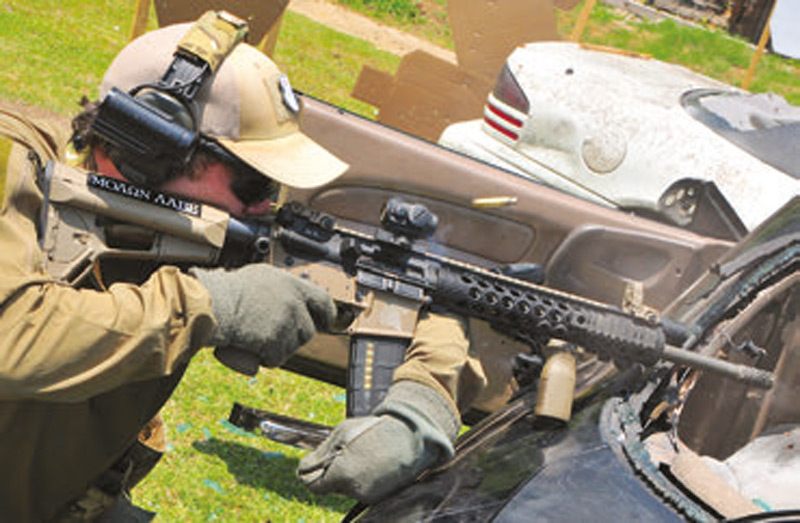
For example, if they know you’re fairly efficient with your weapons skills, they’ll quickly turn your world upside down by throwing many different obstacles in your path. Gunfights aren’t an easy thing to survive, and at Talon Defense they go out of their way to make sure they simulate combat stress as much as possible.
TD1
As on TD1 of any class, the instructors need to know how competent students are with their weapons. Chase told us from the get-go that this was not a level 1 class. So much needs to be covered in Gunfighter I that three days is barely enough time to do it all.
One drill used to check your skills is shooting dots. Dot drills, as they’re sometimes known, require that you shoot a prescribed dot or dots based on a verbal command. But Chase throws a curve when he mixes mathematical equations into the drills. For example, if Chase says, “Four three” you have to shoot the fourth row down and third dot across. After several iterations of this, the sun was getting Alabama-hot and the humidity was pouring on the hate.
Working on three-sided bermed ranges is like standing in a solar oven. The berms reflect the UV rays at you and the heat can get so intense that you start making errors that seem trivial in retrospect, and yet there we were, making error after error as a class.
To close out TD1, we conducted several ground fighting drills that involved starting flat on our backs and transitioning to a seated position, then kneeling, and finally standing. Each position required several shots on target and was designed to see how we handled muzzle discipline.
One of the final drills was a slightly nerve-wracking drill that involved moving around fellow classmates in extremely confined quarters with live ammo. What makes this so disconcerting is that it’s TD1 and you’re in a class with people you don’t know.
TD2
On TD2, we became well acquainted with the fine art of shooting while being harassed. Awhile back, Curt Carpenter invented something he calls the Paw. I had witnessed one of the first iterations of this torture device in early 2012 at a Lighthorse Tactical SWAT course in Gulf Shores, Alabama. Little did I know that the Paw would develop into such an amazing training tool. I don’t want to get too detailed about its construction, since the design belongs to Curt, but the device is exceptionally good at creating various types of malfunctions in pistols and AR-15s, and generally screwing with your equipment.
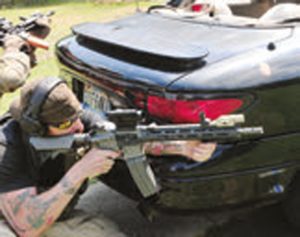
A large portion of TD2 was spent working around vehicles and doing barrier work. During any given drill, you could find yourself subject to the instructors using the Paw to cause weapon malfunctions. They also used the rod end of the Paw to dump our magazine while we were shooting.
Some of you may be saying to yourselves, “I would be able to tell if someone were messing with my rifle or gear.” If you were standing on the square range and someone was messing with you, you would indeed be able to tell. But when your drill starts in the driver’s seat of a car, you’re buckled in, the instructors are screaming at you to get into the fight, you’ve just put several shots through the windshield, and now you’re covered in glass dust and trying to bail out sideways through the shattered window beside you, then no, you won’t have a clue which end is up, much less the fact that someone just pressed your mag catch and dumped your mag on the ground.
The one true way you can evade the Paw is to move very quickly and take out all your targets before the instructors have an opportunity to start messing with your weapons and gear. The problem with that plan is that, as soon as the instructors realize you’re a competent operator, they force you to take a hand out of the fight by holding it behind your back or giving you some object to hold in that hand throughout the drill. What’s your Plan B?
NEW DEFINITION OF COVER
Near the end of TD2, we did various movement drills inside the confines of a vehicle. Each drill was specific to other drills that we’d be expanding on the next day.
And as TD2 drew to a close, we covered a block of instruction that I have never received anywhere but at TD. For as long as I can remember, I’ve believed and have been trained that modern-day vehicles offer no real cover from weapons fire. That statement couldn’t be farther from the truth.
Not only do modern vehicles suck up bullets quite well, they actually offer a startling amount of highly effective cover from all types of small arms fire to include rifles. That statement may be blowing the minds of some readers, but trust me, it is a sobering fact.
Everything from side windows and rear windshields all the way to the antispall glass of the front windshield will so dramatically deflect a bullet that you and your attacker will be hard-pressed to get a decent shot on one another. Steel body panels also do a number on the bullets and render them generally worthless except for the occasional round that might actually make it through the car.
It’s almost a moot point to say that you wouldn’t be able to stop the threat if they were hiding behind the vehicle. Even though the rounds don’t typically make it through the vehicle intact, there is ample evidence to suggest that your gunfire alone would not have a positive effect. There is so much glass and metal flying in all directions that it’s a reasonable expectation to say that you’d be able to drive your attacker back by putting rounds into the vehicle that they’re seeking shelter behind.
With the exception of some very extreme circumstances, I would much rather drive an attacker away than have to take a life. Please understand that I’m not squeamish about killing. But I am reluctant to deal with the legal aftermath of such an act. I’ve been involved in litigation and it’s no picnic.
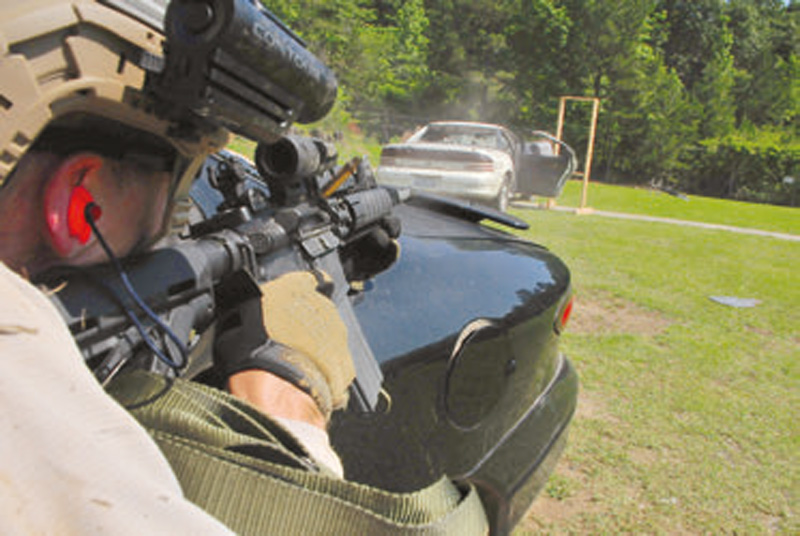
TD3
TD3 started out with a ground fighting exercise known as the boot. It’s a simulated carjacking where you’re required to bail out of the driver’s seat after shooting through the windshield and the passenger window to your right. This scenario has multiple attackers, so you’re required to go to ground, find the attackers’ feet, and shoot them out from underneath them. Once the attackers are down, you must put enough bullets into them to make sure they don’t get back up.
The nature of this drill is a worst-case scenario where you don’t have the option of making distance. Your attackers are many and are coming at you from at least three different directions.
Because of the nature of the drills on TD2 and 3, students were run through individually or in pairs. This yielded a slower pace and also meant a considerably lower round count than TD1.
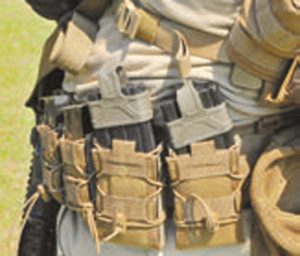
HARDWORKING HOLSTER AND BELT
This was a welcome relief. At the end of TD1, I was getting seriously concerned because we’d gone through a fair number of rounds so early in the class. It didn’t help that I’d been wearing a fully kitted Suregrip Padded Belt from High Speed Gear Inc. I say it that way because HSGI makes it easy to carry lots of ammo.
I was running a G-Code OSH Kydex holster and was concerned my pistol might fall out of the open-topped holster. Not only did it not fall out, it was also a pleasure to work with, due to the fact that I was able to transfer it from my chest rig down to my HSGI Suregrip Padded Belt and back by removing and replacing only two screws.
I want to say a big thank you to Will Phebus from HSGI and Jesse Lockhart from G-Code Holsters and Accessories. These two men and the companies that employ them worked overtime to get me squared away with gear for this Gunfighter course. I am the poster child for “special order.” I am a big lefthanded man who shoots a Glock 21 .45 caliber. Nonetheless, HSGI and G-Code were both able to produce and deliver equipment and a holster well within the timeframe needed.
The equipment worked flawlessly, and I was able not only to carry everything I needed up to the firing line, but could also retain it on my person. That’s crucial in the real world as well as at TD. The reason is simple: on TD1, you’re told that if you drop something and don’t retrieve it immediately, that item will be taken out of the drill to simulate having lost it. This includes weapons.
When I attend a class, I run Black Hills .223 55-grain FMJ through a custom- built suppressed SBR from Ballistic Advantage, and Black Hills 230-grain .45 caliber through my Glock 21. The weapons and ammo worked flawlessly the whole way through.
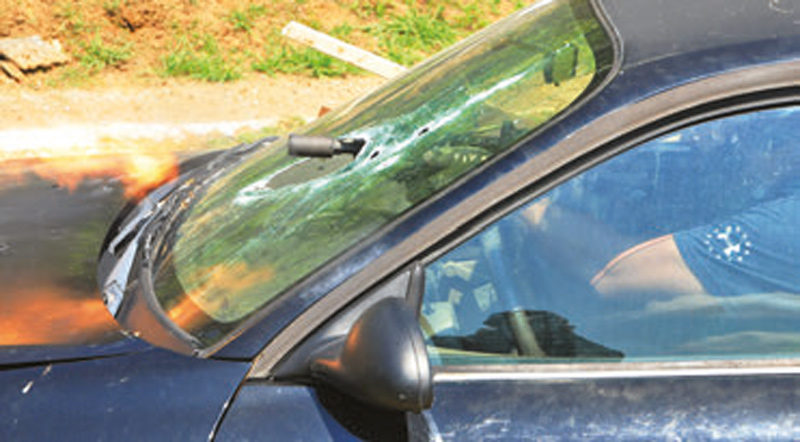
THE FIGHT FROM HELL
The final course of fire was born out of a shooting that occurred in Solon, Ohio on the night of 17 March 2013. I won’t go into the particulars, but this event was a prime example of fighting like you train. By Googling “Solon Police Department shootout,” you can easily find the video. Warning: it’s graphic.
Talon Defense takes every opportunity to learn from real-world events. Chase and his guys set up a modified version of the Solon event and made sure that by the time we reached the vehicle, we were pretty much jacked up on adrenaline and as distracted as possible.
The drill started at the 100-yard line with two men separated 50 yards from one another. Each man was required to put several shots on steel from behind cover, then the driver raced to a waiting car while the second man gave him cover. Next, the second man raced to the car and jumped into the passenger seat.
At this point the instructor, who had taken a four wheeler and nosed it against the rear bumper of the car, poured on the throttle and got the car up to about 15 miles an hour. The vehicle was steered all the way from 100 yards right down to point blank against a Dodge Intrepid that was turned broadside in the student’s path as if a carjacker had pulled in front of him.
Remember that by the time students got into the car, their heart rate was pretty much sky high. Trust me, it gets much worse.
Upon making contact with the Dodge Intrepid, the instructors descended on both shooters and started screaming and causing distractions. Words fail me to describe the chaos that ensued in the small confines of the car. Both driver and passenger were flanked by targets outside their respective windows and directly through the windshield.
“Loud” doesn’t begin to describe this kind of noise. When doing vehicle operations, students either have to fire a suppressed weapon or make sure they have earplugs and muffs on, otherwise they will suffer.
After the first set of targets was dealt with, the driver and passenger were required to bail out of the car. Whether this happened in a coordinated fashion or was chaos served on a platter depended on the preplanning—or lack thereof—between the partners. The latter was most often the end result. How does the saying go? “No plan survives first contact.”
During this drill, instructors watched students closely to make sure no one got out of control and hurt themselves or anyone else. But being so absorbed in the stress of the moment, students had no clue the instructors were even there.
The instructors were also doing their job by messing with students and their equipment whenever possible and making sure they ran everyone dry to teach them either to carry more ammo or carry it more appropriately. One lesson of the exercise is there’s no such thing as too much ammo in this kind of fight.
CLOSING THOUGHTS
Though I’ve tried, I fear it’s impossible to convey in words what this intense class offered. At this point in my career, I have a fair amount of training under my belt. I attend about six training classes per year on top of my regular training on my home range. The round count I fire in a given year is measured in numbers of cases rather than individual rounds. Even with all that, nothing prepared me for this class.
It is a sobering fact that, no matter how prepared you think you are to survive an attack on your person or your family, you might not be. The hand of God, your will to survive, and swift violence of action are the only things that will see you through the day.
I believe in luck, and I believe in skill. I choose to train for this sort of fight because I can’t train for luck to happen when death comes calling. That is why I keep going to Talon Defense courses. They represent some of the best value around. Chase and his guys have a great training range at the Gadsden Police Department facility. And all the instructors push students to the utmost of their abilities.
